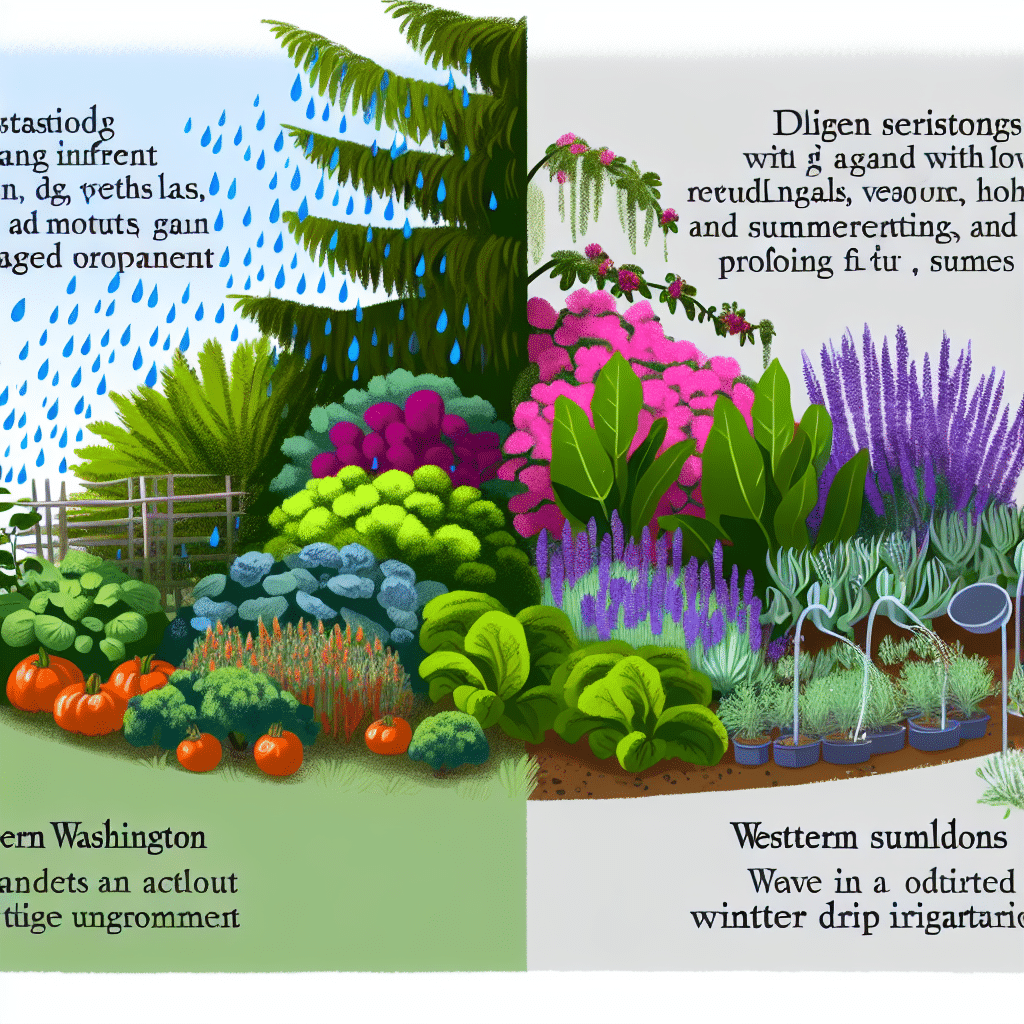Gardening in Washington offers a unique blend of blessings and challenges. From the lush greenery of the western regions to the dryer, arid conditions of the eastern side, Washington state provides a diverse range of climates and soil compositions. This variability necessitates a tailored approach for successful gardening. In this comprehensive guide, we’ll explore the essentials of Washington gardening, dig into some region-specific tips, and offer advice on how to make the most of your garden in the Evergreen State.
Why Is Washington Gardening Unique?
Every state has its own set of gardening rules dictated by climate, soil, and local flora and fauna. However, Washington’s environment is particularly diverse, making it a gardener’s paradise—or nightmare, depending on your level of preparation.
Western Washington: A Gardener’s Dream
Western Washington, including cities like Seattle and Olympia, is known for its mild, wet climate. This area boasts ample rainfall, making it perfect for lush, green gardens. However, this abundance of moisture can also lead to problems such as root rot and mold. The soil varies from rich, fertile loam to heavy clay, which can be challenging to manage.
Key Tips for Western Washington
– **Choose the Right Plants:** Opt for plants that thrive in moist conditions, such as ferns, hostas, and rhododendrons.
– **Drainage is Crucial:** Ensure your garden has proper drainage to avoid waterlogging.
– **Pest Management:** Slugs and snails thrive in moist environments, so be vigilant with pest control.
Eastern Washington: Navigating the Drier Climates
On the other side of the Cascades, Eastern Washington, including Spokane and the Tri-Cities, experiences a drier, more arid climate. Gardens here need to withstand hot summers and cold winters. Soil tends to be sandier and less fertile, requiring modifications to support healthy growth.
Key Tips for Eastern Washington
– **Water Wisely:** Implement drip irrigation systems to conserve water while ensuring your plants get enough moisture.
– **Amend Your Soil:** Add organic material to sandy soils to improve water retention and nutrient content.
– **Drought-Resistant Plants:** Choose plants that can tolerate dry conditions, such as lavender, sage, and succulents.
What to Plant in Washington Gardens?
Selecting the right plants is crucial for Washington gardening. The state’s diverse conditions mean that what works in one area may not work in another. Here are some reliable options for different regions.
Vegetables
– **Western Washington:** Cool-season crops like lettuce, spinach, and peas thrive, as do root vegetables such as carrots and beets.
– **Eastern Washington:** Heat-loving plants like tomatoes, peppers, and melons can prosper given the right irrigation.
Fruit Trees
– **Western Washington:** Apples, pears, and plums are excellent choices due to the cooler climate.
– **Eastern Washington:** Peaches, apricots, and cherries flourish in the warmer, dryer climate.
Flowers
– **Western Washington:** Enjoy a variety of blooms including foxgloves, hydrangeas, and azaleas.
– **Eastern Washington:** Opt for heat-tolerant flowers such as sunflowers, marigolds, and zinnias.
Seasonal Guide to Washington Gardening
Gardeners need to be mindful of the seasons to make the most out of their efforts. Here’s a seasonal breakdown for Washington gardening:
Spring
– **Preparation:** Spring is the ideal time to prepare your beds and start sowing seeds.
– **Planting:** Start cool-season vegetables and hardy annuals.
Summer
– **Maintenance:** Regular watering, weeding, and pest control are essential.
– **Harvest:** Begin harvesting early crops and enjoy the fruits of your labor.
Fall
– **Planting:** Fall is excellent for planting trees and shrubs, as well as cool-season crops for an extended harvest.
– **Preparation:** Clean up your garden to prevent diseases and pests from overwintering.
Winter
– **Protection:** Use mulch to protect plants from freezing temperatures.
– **Planning:** Use this downtime to plan for the next growing season.
Common Challenges in Washington Gardening and How to Overcome Them?
Gardening is both an art and a science, and Washington’s varied climates pose specific challenges that can test even experienced gardeners.
Pests and Diseases
Washington’s lush environments can lead to various pests and plant diseases. Integrated Pest Management (IPM) strategies can help. These include crop rotation, proper plant spacing, and the use of organic pesticides.
Soil Quality
Soil testing is essential to identify nutrient deficiencies. Based on the results, you can amend the soil with compost, manure, or specific fertilizers to balance nutrients.
Weather Extremes
Weather unpredictability, from heavy rainfalls in the west to droughts in the east, makes flexibility crucial. Using raised beds can help manage overly wet conditions, while mulching and irrigation systems can mitigate dry spells.
Conclusion
Washington gardening offers a mixed bag of opportunities and challenges. From the rainy, fertile lands of the west to the dry, sunny expanses of the east, each region requires a personalized approach. By understanding the local climate, selecting appropriate plants, and implementing smart gardening practices, you can create and maintain a thriving garden in the Evergreen State. Regardless of where you are in Washington, a well-planned garden can provide beauty, sustenance, and a deep connection to the land.




